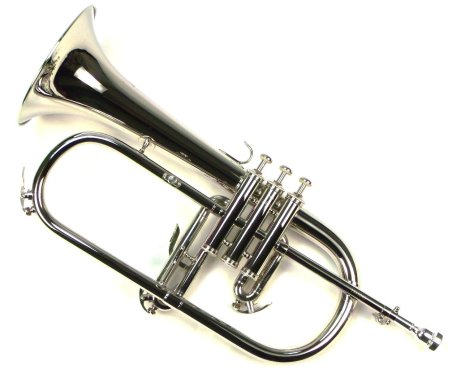Around the early 1930s shiny metal things began to look colder and brighter when chromium plating replaced the soft golden tones of nickel plate. You can clearly see the difference looking at these otherwise identical Leica Elmar lenses (if you can’t, the nickel plated one is on the right!).
My 1912 Triumph hub-clutch motorcycle with many parts in silvery nickel plate. Imagine how different the effect would be if these were in shiny chrome!
More veteran (pre 1914) motorcycle parts in ‘dull’ and ‘bright’ nickel plate*. A beautiful Powell and Hanmer of Birmingham #125 acetylene headlight on the right. As this was one of P&H’s more expensive models the whole light is finished in nickel.
A complete P&H motorcycle acetylene lighting set in the more usual combination of black enamel and nickel plate, restored by the author. The carbide generator is on the lhs with the container for the calcium carbide next to it. Small pieces of calcium carbide are placed in the bottom container of the generator, and water put into the top part. The top ‘dial’ adjusts the amount of water dripping on to the carbide generating acetylene gas which is fed to the front and rear lights via orange rubber tubing.
Early avant-garde tubular furniture in the 1920s was nickel plated. Marcel Breuer Model B3 chair 1925 (lh), Eileen Grey ‘Satellite’ mirror (rh) and E1027 side table from 1927. All are still being made today, but now in chrome.
Trims and fittings for most high end industrial products were finished in bright nickel plate from the late 19thC to the end of the 1920s. This is an Olivetti M.20 typewriter from 1928 (Italian Royal Navy livery)……..
……..and a very smart Murer & Duroni folding camera from 1910.
Nickel plate began to fall out of favour in the late 1920s when chrome plating (invented in the US in 1924) became more popular. It was a harder finish and did not need constant polishing to maintain a shiny surface. Chrome plate became synonymous with the fashionable style of Art Deco in the 1930s and reached its apogee with the extravagant American automobiles of the 1950s.
Nevertheless, nickel plate is still a popular way to finish musical instruments, and customised vehicles. It is also widely used in engineering and architecture. Thomas Heatherwick, of Olympic cauldron fame, has designed large seating units from extruded aluminium which is then nickel plated for maximum wear resistance and visual effect.
This is a great looking bike, based on a Yamaha XV920, custom made by John Ryland of Classified Moto in the USA. The nickel plated fuel tank is from a Benelli – a traditional finish brought right up to date!
The process of nickel plating
Nickel is a chemical element with symbol Ni. A silvery white lustrous metal with a slightly golden tinge, it was first classified as an element by the Swedish scientist Axel Cronstedt in 1751. Nickel is generally found with iron ore, and Earth’s inner core is thought to be a mixture of nickel and iron. The largest producers of nickel are Canada, the Philippines, Indonesia, Australia, and Russia. The small South Pacific island of New Caledonia has around 10% of the world’s nickel reserves. Apart from plating, nickel is used in coins (the US ‘nickel’), stainless steel, batteries, guitar strings, and with other metals as an alloy.
Nickel electroplating is the process of depositing a thin layer of nickel on a metal part for protection against corrosion and wear, and for decorative purposes. The process uses an electrical current to dissolve the nickel (the anode) in an electrolyte solution which is then transferred to the metal part (the cathode). Both are connected to the current directly and via the electrolyte bath making an electrical circuit. The solution in the bath is extremely toxic, containing metal salts, potassium cyanide, phosphates and other chemicals.
This method of plating a metal object with nickel was developed in the mid 19thC once there was a reliable method of creating an electrical current. Its protective and decorative qualities made nickel plate the ideal finish for early vehicles and it was used on bicycle handlebars and pedals, car and motorcycle accessories and parts, over a steel or brass substrate. A nickel plated revolver, often with decorative engraving, was the gun of choice for stylish cowboys and gunslingers in the Old West.
Electroless nickel plating is the most commonly used process now. It uses a controlled chemical reaction to deposit the nickel coating avoiding the toxic bath and electrical current needed for electroplating. Because of its resistance to corrosion and even thickness enp is used for high quality engineering components in the aerospace, automotive, healthcare, marine and defence industries (see link below for more information).
* Nickel plating can be either ‘dull’ (satin) or ‘bright’ (polished). Dull plating, which is tougher and has better corrosion resistance, is created with additives or emulsifying agents in the plating bath which etch microscopic ‘pock marks’ in the surface making it non-reflective. Bright or polished plating is made by adding organic brightening and levelling agents to provide a smooth shiny finish. It is obviously more vulnerable to scratching (nickel is much softer than chrome plate) and if kept outside will often need polishing regularly to maintain the finish, otherwise it ends up looking like dull plating.
Credits and Links:
The industry handbook with everything you need to know about nickel plating:
An interesting site for a UK specialist in electroless nickel plating who was involved with Heatherwick’s seating:
http://www.electroless-nickel-plating.co.uk/
Olivetti M.20 restoration by Guy Pérard:
Nickel plated flugelhorn from Amazon:
Link to Classified Moto website with a wonderful collection of custom-made motorcycles, many with lovely nickel plated tanks:
http://www.classifiedmoto.com/bikes/
Article about the custom Yamaha made by Classified Moto:
http://www.bikeexif.com/yamaha-xv920
Photograph of the Yamaha with the kind permission of Adam Ewing













